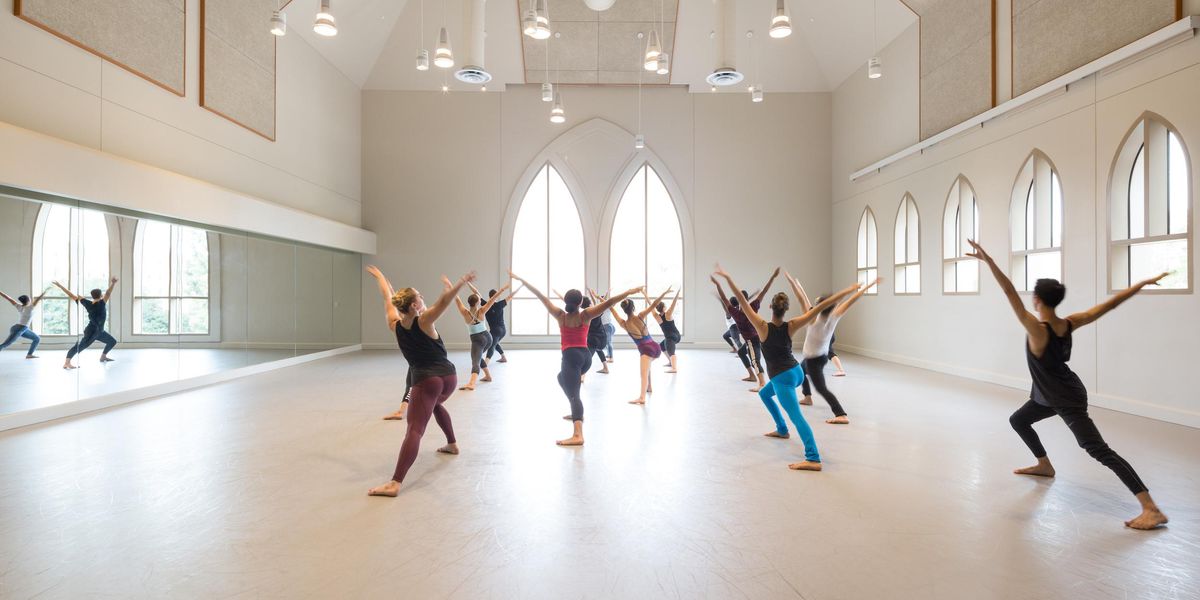Quick Q&A: Ella Baff
The Jacob’s Pillow director on the festival’s 80th year
In 1930, when Ted Shawn acquired a run-down farm in the Berkshire Hills of Massachusetts, he probably never imagined that it would one day be home to an international summer dance festival celebrating its 80th anniversary. Or maybe he did. Shawn and his company of Men Dancers had a way of dreaming big, a quality inherited by subsequent leaders of Jacob’s Pillow Dance Festival, including Ella Baff, who has been the artistic and executive director since 1998.
Under Baff’s guidance, the Pillow became a National Historic Landmark, won a National Medal of Arts, developed an invaluable online archive, and has continued presenting an unparalleled array of dance from around the world. Its delectable offerings this season, which runs June 16 to August 26, include a tribute to the Men Dancers, screenings of the new documentary Never Stand Still, three “Back by Popular Demand” shows, and much more. In fact, our cover girl Sara Mearns makes her Pillow debut this month with the Morphoses company. (For the full schedule, see www.jacobspillow.org.) Dance Magazine associate editor Siobhan Burke spoke with Baff in March.
I’m curious about your “Back by Popular Demand” programs: Crystal Pite’s
Dark Matters, Doug Elkins’ Fräulein Maria, Tero Saarinen’s Borrowed Light. Why did you decide to bring back these works? Usually I don’t bring things back very quickly, or at all; I like to change the mix of things. But there are some works that are terrific, important works that should be seen again and again and become classics. People who saw these three works originally were either so wild about them that they came back a second time, or they said, “That was one of the most fabulous things I’ve ever seen. When is it coming back?” They are unique pieces by some of the smartest people I’ve ever met and some of the smartest dancemakers around.
Are there any common misconceptions about Jacob’s Pillow?
Some people think that we only present ballet. Why? I have absolutely no idea. Some people think it’s much further from New York City than it actually is. No, you can’t take the subway there, but it isn’t very far. A lot of people also don’t know that the Pillow is much more than just performances. All of our free public programs—we have more then 300 of them—are fun and educational. You can learn a great amount in a very casual, friendly way, through talks before every performance, talks with artists, meeting artists at the Pub, observing training with the extraordinary faculty at the school, our exhibits, our archives. Much of what makes the Pillow interesting is that you can spend an entire day, two days, weeks, just wandering around, doing a lot more than seeing performances.
Erica Essner Performance Co-Op dancing in the Pillow’s Inside/Out series. Photo by Christopher Duggan, Courtesy Jacob’s Pillow.
When Shawn founded the Pillow and established his company of Men Dancers, a big part of his mission was to make dance a socially acceptable career for men. How do you think that aspect of his legacy has evolved?
Well, it’s very complicated. I cannot tell you how much I respect Mr. Shawn and the men for what they did early on. They were absolutely bold and radical in their time. I think they would feel that the legacy of men dancing at the Pillow is still strong and quite wonderful. But it’s not something that I actively seek. In fact, I’m thinking, More women choreographers! When we look at the roots of what we now refer to as modern dance—the early days—there was Ted Shawn, and yes, there were other men, but there were a whole lot of women. It was more of a matriarchy, dominated by Martha Graham. But now, I think a lot of people would say that the field is more male-dominated; in most major companies, the artistic directors are men. So if anything, I’m very interested in looking at the work of female choreographers.
Like Crystal Pite—now there’s an example of a strong woman director.
Absolutely. She received the Jacob’s Pillow Dance Award last year, and I felt so great about handing that over to her. I think she is an unusual talent—and, by the way, she happens to be a woman.
It seems that in the 1920s and ’30s, Shawn’s crusade for male dancers was necessary. But now, maybe partly because of his efforts, the tables have turned. Although I think that socially, male students who dance still go through a hard time.
Yes. In many places in the country and in many families—as I learn when I talk to young men from the School at Jacob’s Pillow—there is still a stigma attached to men who want to be dancers. But it’s certainly not what it was.
Is there anything that you’re especially looking forward to this season?
I’m very excited about all of the work. What presenters really want to do—and this is so simple it’s ridiculous—but not unlike artists, we want to share. We want to share art with the people. So I get very energized thinking about the festival, and particularly this one because it’s the 80th.
At top: Ella Baff. Photo by Christopher Duggan, Courtesy Jacob’s Pillow.




